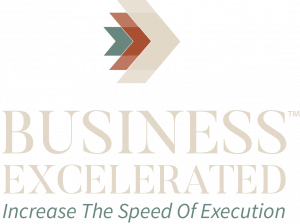Our biases are a funny thing.
What’s funny about them is that they are often opinions that we have about something or someone without consciously choosing that opinion. We may not even agree with our biases on a conscious level, but there they are anyway.
And they show up all day long. When we see someone in the hallway at work, when we are purchasing something from the store, when we are driving on the freeway.
We begin to learn our biases as a type of conditioning from a very young age. Our biases are predominantly from our upbringing, our environments as children, from nurture. And there is nothing wrong with them in and of themselves because most of the time they happen before our thoughts really register. And we can view our biases as neutral, as long as we also decide to observe them and make a conscious choice about them.
This is significant because our biases show up in situations where the stakes are high and very important, such as hiring employees when your company is growing. That is absolutely a situation where you would want to be aware of your biases so that you can make an objective decision with your organization’s best interest in mind.
Here’s are some examples of how biases show up during the hiring process:
- The Resume: Based on listed factors our biases can pre-determine the level to which someone is qualified, such as if the school they attended is your alma mater vs if they are from a small school you’ve never hear of. If they provide their address and they are from a more affluent town versus from a neighborhood seen as less prestigious.
- Interviewing: Bias can occur during interviews when you may ask questions that are irrelevant to the job and then have favor for certain candidates based on their personal likes/dislikes (ones that align more with your own or not).
- Assessment methods: Our biases can show up in assessment methods such as personality tests or cognitive ability tests, and may favor certain groups of people or have cultural biases that disadvantage others.
- Networking: Bias can also occur through personal networks, where job candidates are recommended by people they know or are connected to. This can disadvantage qualified candidates who did not come with such connections.
Be aware that we will make a candidate that we relate to less, work harder to prove themselves than the ones we feel a personal connection to. And most of the time we don’t know we are doing it.
That is why our biases can be seen as neutral – because we don’t mean to include or exclude. And in order for our biases to remain neutral we have to decide to observe them and make a conscious choice about them.
Objectively select members for your teams with your organization’s best interest in mind. Decide that you will hire the person who will do the job well, not just the person who will get the job done. Sometimes that means choosing the candidate that your biases advise otherwise. You’ll be thankful you did.
QUESTION >
When do you see a bias show up for you in conversation today? Just be observant – watch for it from yourself or someone else.
Here’s an example: I was meeting with a colleague the other day and I was asked “since you are a young woman, how often do you come across someone who asks you about your level of expertise?” This person was a male, and I can almost guarantee that if I was also a male he would not have had that question for me. He’s a very kind person and I didn’t take it personally – he has some bias that set him up for the question. And I’d like to think my reply (which was really friggin’ good if I may say so) provided him the opportunity to consider something different and reset that bias.




